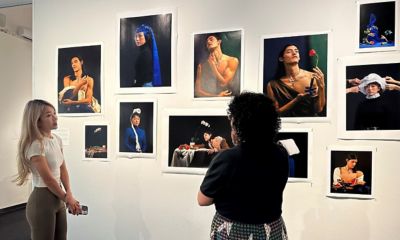As part of the Photography discipline you will have access to a range of specialised photographic facilities including lighting studios, professional camera equipment, editing suites, computer labs and fine art large format printing technologies.
Learning in this course is balanced between studio- and classroom-based activities alongside theoretical studies and work integrated learning. A strong emphasis is placed on guided, self-directed learning and independent research.
Regular engagement with academic staff and your peers in tutorials and critique sessions will assist you in refining your practice and clarifying concepts, materials and methodologies.
Lectures, seminars, presentations and field trips to galleries and culture resources will expand your understanding of photographic practice, complementing studio-based learning.
Assessment includes photographic folios, reflective reports, curating and critiquing exhibitions, essay writing, documentation of processes, and the development of a major project.
The Master of Photography program is made up of Photographic Studio courses, complemented by core research and professional development subjects and a variety of electives. You will engage with a range of different students and staff who provide insight into professional practice and the creative arts industries.

























